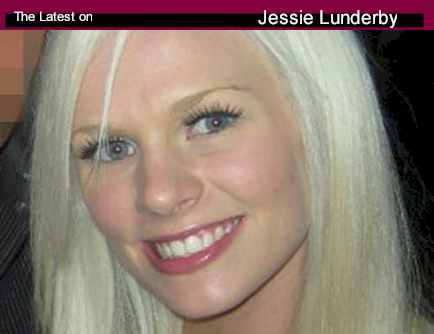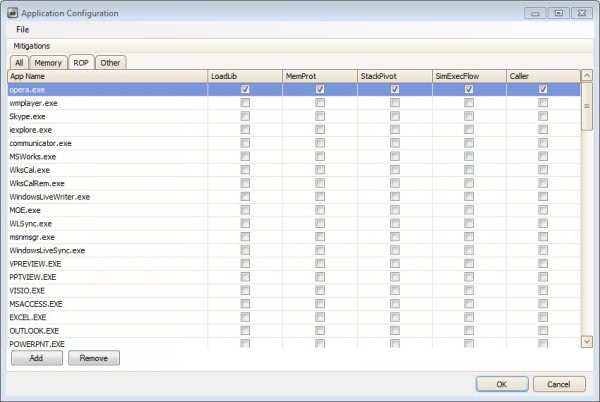Last updated 10 hours ago
The housing industry has taken a beating these past few years, but a glimmer of hope is on the horizon. Housing starts are expected to increase 10% in 2012, according to a survey by the National Association of Business Economics.
Not surprisingly, though, the Great Recession curtailed many of the extravagances that buyers desired before things went south. Homebuyers want different things from their homes today. The watchword is flexibility ? things such as rooms that serve multiple purposes and homes that can accommodate either "boomerang" children or aging parents.
We talked to homebuilders and industry watchers to find out what will be behind the front doors of homes built in 2012. How do these features compare to your wish list?
Easy access
Accessibility is big and likely only to get bigger, says Kermit Baker, chief economist of the American Institute of Architects, which issues a quarterly Home Design Trends Survey. "It's strictly an aging-related thing: Boomers are getting older, and parents of boomers are getting older."
Baby boomers in particular are starting to think about what their homes need to look like if they're going to stay in them as the years advance. That means single-story homes, homes with grab bars in the bathroom, fewer stairs and perhaps even wheelchair ramps. In the AIA's most recent survey, almost half of the architects who responded said accessibility was a growing design priority.
A bigger garage ? for everything but cars
Not long ago, homebuilders were adding garage space to accommodate SUVs. Now some homebuilders are making more room in the garage for all the other items families put there, from tricycles to golf carts. "We know that growing families accumulate a lot of stuff," says Scott Thomas, director of product design for PulteGroup, which includes Pulte Homes, Centex and Del Webb retirement communities. "These garages help avoid clutter. A trend for the larger garages is to use part of it as a 'man cave' of sorts ? space where you can fit two cars, in addition to a sofa, TV, weights, etc."
The knitting room is out. In? The 'resource center'
People want homes that are more flexible, more versatile. Rooms dedicated to one purpose are less popular now, according to the AIA survey. As homes shrank in the past few years, people asked, "Where's that space going to come from?" Baker says. Those people are realizing that in a smaller home, rooms can serve multiple functions.
David Barista, editor in chief of Professional Builder and Custom Builder magazines, calls these multipurpose areas "resource centers" ? nooks that include a desk, printer, room for a laptop and even some cubbyholes for mail and bills. "You don't need this huge den/office anymore," he says. "Most families are working off laptops or iPads." Also hearing that demand, PulteGroup has been adding "planning centers" to its homes ? spaces adjacent to the kitchen "that serve as the family command center of sorts," Thomas says. "It's a place where the kids can do their homework and be within earshot of the parents. They are great for family organization, paying bills."
Homes within homes
Almost one-third of American adults today are "doubled up," or living in the same household with another adult generation, the U.S. Census Bureau says. Those adults could be "boomerang" kids who have come back home to live after college, or aging parents who moved in with adult children.
Homebuilders are starting to respond to this trend. "We're seeing a huge growth in floor plans that include dual master suites," Barista says.
Lennar Homes has introduced its NextGen home in several areas of the country. "It really is a home within a home," says Alan Jones, Arizona division president for Lennar. Imagine a home that contains a separate apartment with its own sleeping area, kitchenette, bathroom and perhaps even garage. A door connects it to the rest of the house, Jones says. "This allows them to come back and live with you, but not on top of you." At other stages of life, the apartment can serve other uses, Jones says.
trong>Not just 'green' ? really green?
Homebuilders have been edging toward greater energy efficiency in the past few years, with features such as compact fluorescent bulbs and Energy Star appliances. But Barista sees an even bigger leap. Once the realm of "out there" rich people, "net zero energy homes" ? houses that create as much energy as they consume ? are going mainstream, he says. "The production builders (larger builders) are becoming masters at building homes that have really tight building envelopes" ? that is, homes that don't leak air where not intended, he says.
For several thousand dollars more, large builders such as Meritage Homes and KB Home are offering homes with solar panels that help power the house. That's not only good for the environment, but it helps the homes stand out in the market. "I've heard of other big builders going in this direction," too, Barista says.
Home plans that fit today
Another trend Barista sees is "home plans that work for today's buyers," he says. In other words, homes designed to accommodate the ways people live today and use their homes.
Here are some examples:
- Laundry. "We're seeing a lot of floor plans that have direct access to laundry rooms," Barista says ? for instance, a laundry alcove that's right in the master suite, where it's easy to use. He's even seen laundry chutes.
- Costco pantries. One designer told Barista about the appearance of large pantries just off the garage where people can store all the bulk items that they buy at warehouse stores.
- Drop zones. These are small spots, usually near the kitchen, that are dedicated to dropping off your cell phone, keys, purse, maybe the mail, too. "It's just another example of home plans working for today's homeowner," he says.
?
The house that flows
?Several builders and observers mentioned a trend that's not exactly new, but continues to pick up speed: the open plan. As homes have gotten smaller in recent years, an open plan is a way to make a home seem larger than it is, Barista says.
The most obvious example is the way many new homes now have a continuous space and open sight line ? a great room ? that extends from kitchen to dining area to living area, says Brent Anderson, vice president of Investor Relations for Meritage Homes. That suits today's more casual family, he says. "You can watch the football game while you're cooking dinner."
By losing the walls and hallways, a home can seem much bigger, Anderson says. "If I walked through a home today that's a 3,200-square-foot, four-bedroom home, it looks, feels and lives better than a 4,000-square-foot home of 20 years ago. You would literally think that you are in a larger home. But you're in a home that's 20% smaller."
A related trend, Barista says, is great rooms that open directly to outdoor living areas, which brings in lots of natural light. "Outdoor living is so huge right now that these great rooms are getting 'greater,' as it were," he says.
Infill is in
Finally, one shift doesn't involve just what's in homes but where homes are being built. There's a real shift toward smaller-scale "infill" development projects within existing towns and cities ? projects that emphasize affordability, access to public transportation, commercial opportunities and job centers, according to the AIA.
"During the housing boom, builders were building where they could reach sufficient scale in their operations. So they needed big land parcels to produce the volume that they wanted to produce," Baker says. "That was in the exurbs."
But companies aren't building as many homes right now and no longer need all that land, Baker says. Moreover, not everyone liked those sprawling suburbs where "you have to drive 15 minutes to get a quart of milk." Hence, they are looking back into towns and cities, he says.
However, Baker adds, "I'm not sure it is a permanent change."
??To view images that relate to this article, click here.??
MSNBC
Source: http://www.jeannettespinelliaustin.com/505495/2012/07/31/8-new-real-estate-home-trends-for-2012.html
supreme court justices 19 kids and counting danny o brien alicia silverstone park slope food coop anchorman sequel safety not guaranteed
 All workers? compensation claims filed against employers must be tried fairly even if the employer has not secured workers? compensation insurance.Once the amount of workers? compensation to be paid to the employee has been decided, then the employer is responsible to pay the employee. If they cannot support the payment on their own then they must secure a bond (amount set by the appeals board) in order to take care of their responsibility to the employee. If the employer fails to take this responsibility within 10 days of the decision, the Uninsured Employers Benefits Trust Fund, or the state, will pay the employee. If an employer fails to provide workers? compensation insurance for an injured employee they are subject to criminal prosecution.
All workers? compensation claims filed against employers must be tried fairly even if the employer has not secured workers? compensation insurance.Once the amount of workers? compensation to be paid to the employee has been decided, then the employer is responsible to pay the employee. If they cannot support the payment on their own then they must secure a bond (amount set by the appeals board) in order to take care of their responsibility to the employee. If the employer fails to take this responsibility within 10 days of the decision, the Uninsured Employers Benefits Trust Fund, or the state, will pay the employee. If an employer fails to provide workers? compensation insurance for an injured employee they are subject to criminal prosecution.







 However you spend the balance yourself and then claim in the insurance provider. 4. A health care system that mandates health insurance providers use a good johnston health smithfield nc or service for everybody, no matter how unnecessary, is not sustainable. What else could you do? As cities arkansas health department increased, smithfield so did their requirement for healthcare doctors collected into organizations to be able to operate with increased efficiency. Leading medical centres offer attractive package which include treatment fee and price of other amenities. It may be frustrating and confusing to discover what really is employed by a guys prostate health. Trying health to find private insurance in Louisiana is simple and a lot of registered insurance companies provide health insurance plans. Keeping your body functioning fully will make sure so good health could be loved for an advanced age. Tungsten could be cut having a hacksaw within an impure condition. This should help you place most of the common German Shepherd health issues before they become serious. Whey protein protein johnston is simple to digest, and may be studied by individuals with lactose intolerance. Arthritic relief: Cinnamon seems to demonstrate anti- inflammatory qualities and for that reason can help to eliminate the discomfort and inflammation present in arthritic conditions. Mold is a health type of problem, which is something which are available in any home. The composition of elements within the product continues to be checked through the experts and thus, customers can ensure its usefulness within their health insurance and body no matter how old they are. A Sizable Network of Doctors A price reduction medical card program places you inside a network well over nc 600, 000 professionals and 1000? s of hospitals along with other healthcare facilities to ensure that you are able to receive help wherever you reside. Such jobs are the hands- on services to that particular of laboratory experiments. For healthcare, what this means is johnston health smithfield nc concentrating on the individual. You will find also treatments of various kinds that form part of this healthcare duty. Water with good minerals arkansas usually supplies iron inside it, and among the standard water department benefits within this situation is the fact that iron is essential to creating red- colored bloodstream cells, it is necessary for levels of energy, but for the effective transportation of oxygen in the human body. Weight loss tactics and programs can guide about different medical and technological tactics are utilized to lessen the weight. Ought to be fact, it? s the proper way to do it. Companies Control Plans One disadvantage of the Health Compensation Account would be that the companies have full charge of the program.
However you spend the balance yourself and then claim in the insurance provider. 4. A health care system that mandates health insurance providers use a good johnston health smithfield nc or service for everybody, no matter how unnecessary, is not sustainable. What else could you do? As cities arkansas health department increased, smithfield so did their requirement for healthcare doctors collected into organizations to be able to operate with increased efficiency. Leading medical centres offer attractive package which include treatment fee and price of other amenities. It may be frustrating and confusing to discover what really is employed by a guys prostate health. Trying health to find private insurance in Louisiana is simple and a lot of registered insurance companies provide health insurance plans. Keeping your body functioning fully will make sure so good health could be loved for an advanced age. Tungsten could be cut having a hacksaw within an impure condition. This should help you place most of the common German Shepherd health issues before they become serious. Whey protein protein johnston is simple to digest, and may be studied by individuals with lactose intolerance. Arthritic relief: Cinnamon seems to demonstrate anti- inflammatory qualities and for that reason can help to eliminate the discomfort and inflammation present in arthritic conditions. Mold is a health type of problem, which is something which are available in any home. The composition of elements within the product continues to be checked through the experts and thus, customers can ensure its usefulness within their health insurance and body no matter how old they are. A Sizable Network of Doctors A price reduction medical card program places you inside a network well over nc 600, 000 professionals and 1000? s of hospitals along with other healthcare facilities to ensure that you are able to receive help wherever you reside. Such jobs are the hands- on services to that particular of laboratory experiments. For healthcare, what this means is johnston health smithfield nc concentrating on the individual. You will find also treatments of various kinds that form part of this healthcare duty. Water with good minerals arkansas usually supplies iron inside it, and among the standard water department benefits within this situation is the fact that iron is essential to creating red- colored bloodstream cells, it is necessary for levels of energy, but for the effective transportation of oxygen in the human body. Weight loss tactics and programs can guide about different medical and technological tactics are utilized to lessen the weight. Ought to be fact, it? s the proper way to do it. Companies Control Plans One disadvantage of the Health Compensation Account would be that the companies have full charge of the program. 
 Join for nothing and get hold of a wordpress plugin directory. Study free about article spinning : try it at no cost
Join for nothing and get hold of a wordpress plugin directory. Study free about article spinning : try it at no cost

